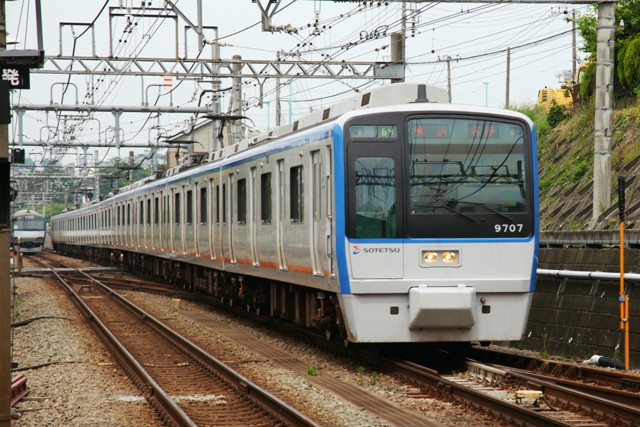
Tobu Asakusa Station and the terminal building
Tobu is one of the major railway companies in Tokyo. They operate the largest private railway network in the Tokyo metropolitan area, and are currently very aggressive in diversifying their business as well. Their latest biggest news is the grand opening of Tokyo Sky Tree, the 634 meter-high world's tallest broadcasting tower near Oshiage Station (see my blog on July 29, 2011). At the same time, Tobu has renovated Asakusa Station and the terminal building in the northeastern part of downtown Tokyo.
Tobu-Asakusa Terminal Building (see the top photo) was opened in 1931. It has seven stories above ground and one below. The ticketing office is on the ground floor; meanwhile the platforms are on the second floor, where four 6-car trains can stop in parallel. Matsuya Department Store occupies the 3rd to 7th floors in the building.
Due to restriction of the site, Tobu couldn't expand their station as the number of passengers grows. But thanks to the restriction, this retro building has been surviving for 81 years since it was opened. The recent renovation accentuated the beauty of Asakusa Station. For example, the building has been precisely restored to the original style as it was completed in 1931. Additionally, it is now lit up at night. Furthermore, the walls and pillars were retrofitted for anti-seismic reinforcement.
I have a special fondness for the retro feel of Asakusa Station, as it leaves the impression of Art Deco in the 1930s.
Tobu-Asakusa Terminal Building (see the top photo) was opened in 1931. It has seven stories above ground and one below. The ticketing office is on the ground floor; meanwhile the platforms are on the second floor, where four 6-car trains can stop in parallel. Matsuya Department Store occupies the 3rd to 7th floors in the building.
Due to restriction of the site, Tobu couldn't expand their station as the number of passengers grows. But thanks to the restriction, this retro building has been surviving for 81 years since it was opened. The recent renovation accentuated the beauty of Asakusa Station. For example, the building has been precisely restored to the original style as it was completed in 1931. Additionally, it is now lit up at night. Furthermore, the walls and pillars were retrofitted for anti-seismic reinforcement.
I have a special fondness for the retro feel of Asakusa Station, as it leaves the impression of Art Deco in the 1930s.
Tobu Asakusa Station and EMU 10000 series






